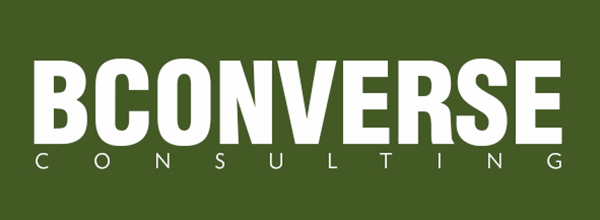The e-commerce landscape is evolving rapidly, and staying ahead of web design trends is crucial for keeping your online store competitive. As consumer expectations shift and new technologies emerge, your website’s design can make or break conversions.
In this post, we’ll explore the top web design trends that will dominate e-commerce in 2025 and beyond, helping you create a cutting-edge shopping experience that drives sales.
—
1. AI-Powered Personalization
Artificial Intelligence (AI) is transforming how e-commerce stores engage with customers.
How AI Will Shape Web Design:
✔ Dynamic Product Recommendations – AI analyzes browsing behavior to suggest personalized products in real time.
✔ Chatbots & Virtual Shopping Assistants – AI-driven chatbots provide instant customer support and product guidance.
✔ Personalized Homepages – Websites adapt content based on user preferences, location, and past purchases.
(Example: Shopify’s AI-powered “Shopify Magic” helps merchants generate personalized product descriptions and emails.)
—
2. Dark Mode & Low-Light UX
Dark mode isn’t just a trend—it’s becoming a user expectation.
Why Dark Mode Matters for E-Commerce:
– Reduces eye strain, especially for mobile shoppers.
– Enhances visual hierarchy, making CTAs and product images stand out.
– Saves battery life on OLED screens.
Best Practices:
– Offer a toggle switch for users to choose between light/dark themes.
– Ensure text remains readable (avoid pure black; use dark grays).
—
3. 3D & Augmented Reality (AR) Shopping Experiences
The future of online shopping is immersive and interactive.
How 3D & AR Enhance E-Commerce:
– Virtual Try-Ons – Customers can “try” glasses, makeup, or clothing via AR.
– 3D Product Previews – Shoppers can rotate, zoom, and interact with products.
– AR Room Placement – See how furniture looks in your home before buying.
(Brands like Warby Parker and IKEA already use AR—expect this to become standard.)
—
4. Ultra-Minimalist & Brutalist Design
Less clutter = more conversions.
Key Features of Minimalist E-Commerce Design:
✔ Ample White Space – Focuses attention on products.
✔ Bold Typography – Clean, readable fonts with strong hierarchy.
✔ Limited Color Palettes – One or two dominant colors for a sleek look.
Brutalist Design Twist: Some brands are embracing raw, unpolished aesthetics (asymmetrical layouts, stark contrasts) to stand out.
—
5. Voice Search & Conversational Commerce
With smart speakers and voice assistants rising, optimizing for voice search is critical.
How to Prepare for Voice Commerce:
– Use natural language in product descriptions (answer questions like “What’s the best running shoe for flat feet?”).
– Implement voice search filters (e.g., “Show me blue sneakers under $100”).
– Add FAQ schema markup to help Google pull answers from your site.
—
6. Micro-Interactions & Hover Animations
Small animations improve engagement and usability.
Examples of Effective Micro-Interactions:
– Button Hover Effects – Color changes, slight enlargements.
– Loading Animations – Fun, branded spinners instead of dull progress bars.
– Add-to-Cart Confirmation – A small bounce or checkmark to reassure users.
(Tip: Don’t overdo animations—they should enhance UX, not distract.)
—
7. Sustainable & Ethical Design
Eco-conscious consumers prefer brands that prioritize sustainability.
How to Reflect Sustainability in Web Design:
– Use earth-toned color schemes (greens, browns, muted blues).
– Highlight eco-friendly badges (“Carbon Neutral Shipping”).
– Optimize for fast loading (reduces energy consumption).
—
8. Passwordless Logins & Biometric Checkout
Faster, more secure authentication is the future.
Emerging Login & Payment Trends:
– Face ID & Fingerprint Checkout – Apple Pay, Google Wallet.
– One-Click Guest Checkouts – No account needed.
– Blockchain-Based Security – For ultra-secure transactions.
—
9. Scroll-Triggered Storytelling
Engage users with narrative-driven product pages.
How to Use Scrolling Effects:
– Parallax Scrolling – Creates depth as users scroll.
– Sequential Product Reveals – Unfold features step-by-step.
– Interactive Lookbooks – Let shoppers explore collections through scroll.
(Example: Nike’s product pages often use dynamic scrolling effects.)
—
10. AI-Generated Custom Designs
Generative AI lets shoppers co-create products.
Future Possibilities:
– Custom Sneaker Designers – AI suggests color combos based on trends.
– Personalized Clothing Patterns – Users input preferences, AI generates unique designs.
(Brands like Adidas are already experimenting with AI co-creation.)
—
Final Thoughts: Stay Ahead or Fall Behind
E-commerce in 2025 will be faster, smarter, and more immersive. By adopting these trends early, you’ll create a seamless shopping experience that converts visitors into loyal customers.
Need Help Future-Proofing Your E-Commerce Store?
Our team specializes in cutting-edge Shopify design & development to keep you ahead of the competition.
—
Which trend excites you the most? Let us know in the comments!
